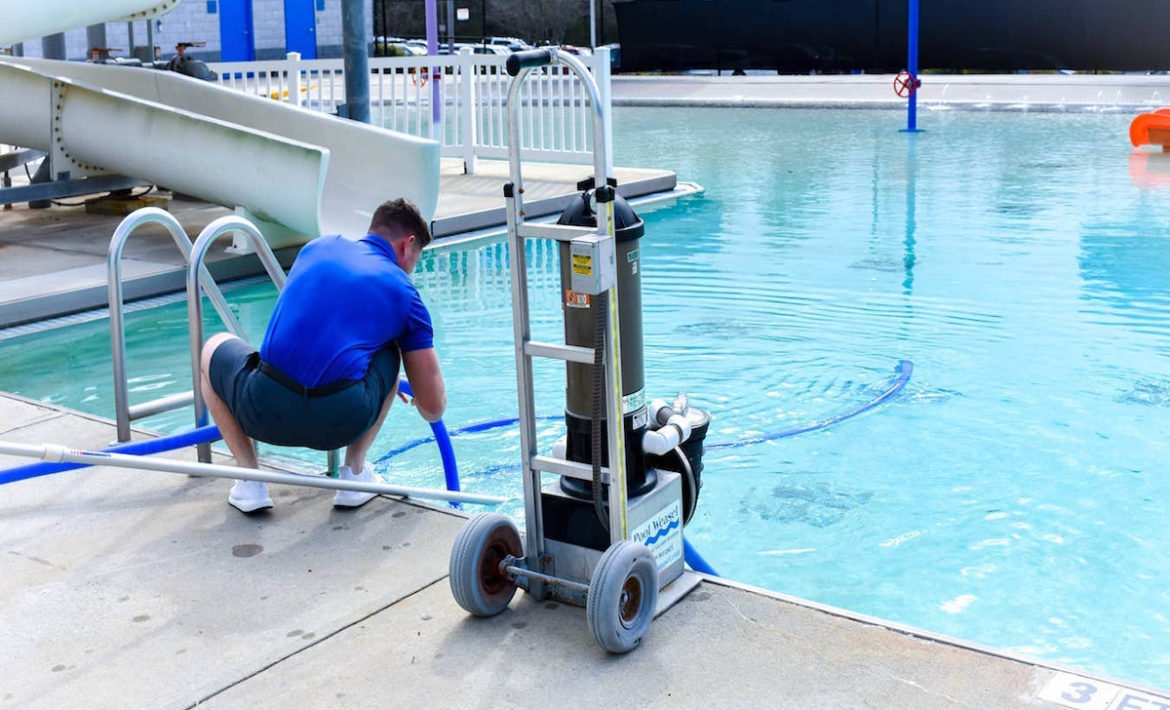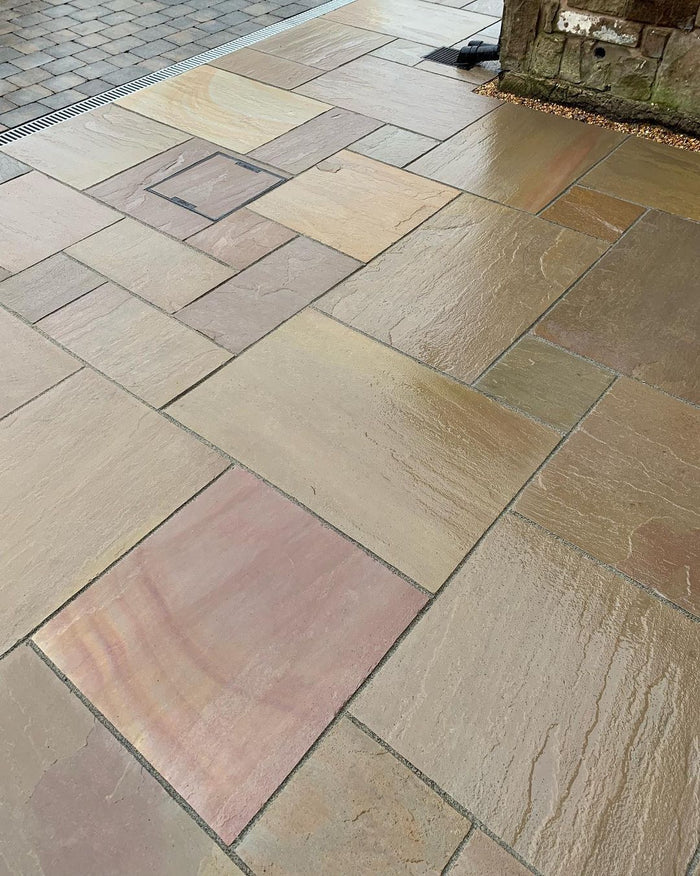Achieving optimal pool water flow relies heavily on smart plumbing choices that affect everything from energy efficiency to water quality. Efficient plumbing doesn’t just save energy but also ensures that your pool stays clean, clear, and ready for use with minimal maintenance, reducing both time and costs in the long run. Properly designed water flow systems enhance the distribution of chemicals, prevent algae buildup, and keep debris from settling, leading to a healthier, more inviting pool environment.
Beyond aesthetics, optimized water flow helps extend the life of your pool components, as it reduces strain on pumps and filters. In this article, we’ll explore the principles of optimizing pool water flow, examine essential plumbing components, and discuss the long-term benefits of a well-designed, efficient system that can elevate your pool’s functionality and longevity.
Understanding Pool Water Flow Basics
Pool water flow is critical to maintaining a healthy and clean pool environment, as it ensures that all areas of the pool are consistently refreshed and filtered. Without proper flow, water can stagnate, creating ideal conditions for algae growth and bacteria proliferation, which can compromise water quality and safety. In a well-designed plumbing setup, water flows smoothly through each component—such as the pool, filter, heater, and chlorinator—before returning, ensuring thorough cleaning, chemical distribution, and even temperature. An effective pool water circulation system also minimizes dead zones, areas where water doesn’t circulate adequately, which can harbor harmful bacteria and debris, making regular maintenance more challenging.
Optimizing water flow starts with selecting high-quality, compatible equipment, such as pumps and filters, tailored to your pool’s specific needs. Equally important is configuring them correctly within the plumbing network to reduce resistance and maximize circulation. By focusing on these elements and understanding their roles, you can achieve steady water movement that not only enhances filtration but also reduces strain on your pool’s components, helping to prevent costly repairs and prolong the life of your pool system.
Essential Components for Efficient Pool Plumbing
When planning a pool plumbing system, the primary components include the pump, filter, heater, and pipes. Each part plays a crucial role in managing pool water flow. The pump serves as the system’s heart, circulating water through the various elements and back to the pool. A high-quality pump with variable speed settings can help balance energy use with effective water circulation, allowing for adjustments based on usage and weather conditions.
Filters are another essential component for clean and safe pool water. They trap particles, bacteria, and other contaminants, preventing them from entering the pool. The right filter size is important; an undersized filter struggles to keep up with circulation demands, while an oversized one can cause inefficient water movement.
In addition to the pump and filter, properly-sized pipes ensure optimal flow. The diameter and material of the pipes impact how smoothly water moves through the system. Narrow pipes may restrict flow, reducing the overall efficiency of your setup. PVC pipes, commonly used in pool plumbing, provide durability and resistance to corrosion, supporting stable water flow over time.
Designing for Efficient Pool Water Circulation
One of the most important aspects of pool water optimization is designing a system that minimizes resistance. Resistance, or friction within the pipes, can significantly reduce flow efficiency. Every bend or elbow in the plumbing increases resistance, so a well-designed layout minimizes sharp turns and uses longer, straight pipes wherever possible. By reducing these barriers, you improve water flow, lower energy consumption, and reduce strain on your equipment.
Consider the placement of inlets and outlets in your pool, which affect the overall flow pattern. Ideally, you want inlets and outlets positioned to create a circular movement, reducing dead spots where water tends to stagnate. The return jets should be aimed to facilitate efficient water circulation, which helps distribute chemicals and heat evenly throughout the pool.
When considering tile installation around your pool area, key considerations for pool tile selection come into play. Tile choices that complement the pool’s water flow, such as non-slip surfaces, can enhance safety and comfort, particularly around areas where water is consistently splashing. Additionally, selecting the right tile contributes to the aesthetics of the pool space, making it more enjoyable and visually appealing.
Benefits of Optimized Pool Water Flow
Optimized pool water flow offers numerous advantages, from improved water quality to enhanced energy efficiency. By maintaining a steady flow, you ensure that all areas of the pool receive adequate filtration, reducing the buildup of bacteria and algae. A well-maintained water circulation system also leads to fewer chemical imbalances, as chlorine and other treatments disperse evenly throughout the pool.
Energy efficiency is another key benefit of optimizing pool water flow. When your pool plumbing operates smoothly, your pump doesn’t have to work as hard to move water through the system. This efficiency leads to reduced energy consumption, which can significantly lower operating costs over time. Using a variable-speed pump can further enhance energy savings, allowing you to adjust water flow based on usage needs.
Additionally, improved water flow reduces wear and tear on pool equipment. By minimizing resistance within the pipes and ensuring balanced circulation, your pump, filter, and heater experience less strain, extending their lifespan. This proactive approach reduces the likelihood of costly repairs, making your pool system more reliable and easier to maintain.
Tips for Long-Term Maintenance
Maintaining optimal pool water flow isn’t a one-time task; it requires regular attention to ensure the system operates smoothly over time. Regularly inspecting your pump and filter for signs of wear or blockages is essential to prevent performance issues. For example, a clogged filter can restrict water flow and decrease the efficiency of the entire system, leading to increased strain on the pump. Cleaning or replacing the filter as needed helps maintain consistent circulation, improving overall water quality and ensuring a healthier swimming environment.
Seasonal adjustments also play a role in optimizing water flow. During periods of high usage, such as summer, the pump may need to run for longer hours to keep the pool clean and free of debris. In cooler months, when the pool is used less frequently, reducing pump runtime can save energy without compromising water quality. Understanding how to adapt to seasonal demands keeps your pool in top condition year-round. For instance, consulting a Professional Pool Cleaning Service Victorville can provide tailored recommendations on seasonal adjustments and system maintenance to enhance water flow efficiency.
Finally, keep an eye on water levels in your pool, as low levels can significantly affect water flow and pump performance. Proper water levels allow for effective skimming and circulation, so be mindful of evaporation and splash-out, especially during warmer months. Consistently checking and adjusting water levels can have a significant impact on maintaining an efficient and balanced pool water flow system, helping reduce maintenance needs and extending the life of your pool equipment.
Final Thoughts
Achieving efficient pool water flow through well-designed plumbing benefits both pool health and maintenance costs. By focusing on the right equipment, minimizing resistance, and regularly maintaining components, you can create a system that enhances water quality, reduces energy consumption, and extends the life of your pool equipment. An optimized water flow system ensures an inviting pool environment that’s easy to maintain, energy-efficient, and reliable year after year.




